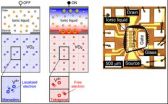(Press-News.org) The economic impact of the Olympics has not been the same for all host countries. According to the Olympic Studies Centre at the Autonomous University of Barcelona, the games held in the Catalonian capital 20 years ago were a resounding and incomparable success. But it is not always the case.
The Olympic Games have always been thought of as a great opportunity to give a long-term boost to the economy by taking advantage of a short-term event. But before embarking on the costly effort of organising the Olympics, each candidate city should evaluate their own goals and capacities in order to avoid failure. This is the main conclusion of a report by the Olympic Studies Centre at the Autonomous University of Barcelona (CEO-UAB), in which the economic impact of the Olympics from Tokyo '64 to the present day was studied.
"The overall balance of celebrating the games tends to be positive. There are three obvious cases of failure: that of Montreal, due to financial causes, perhaps because all that investment was a little premature; that of Atlanta, because they tried to organise the games wit no urban impact, and in addition there was a terrorist attack; and Athens, where the organisation failed and the games bore little fruit", said to SINC one of the CEO researchers, Ferran Brunet.
Those celebrated in Barcelona are considered to be an example of profitability. One of the causes of its economic success was that the building work related to sport made up only 9.1% of the total investment connected with the games. "Such a small proportion can be explained by the huge amount of private investment which was triggered by the boost of the Olympics on the city", the CEO research indicates.
61.5% of Olympic investment was targeted to civil engineering, pointing to a key aspect of Barcelona '92: its capacity to structure the city. The construction of the Barcelona circulars —various ring-road axes —, the reopening of the city to the sea through the construction of the Olympic village, and the creation of various new centrality areas and the Olympic areas of Montjuïc, Diagonal and Vall d'Hebron were the main developments.
The 'Barcelona model' a key to success
"When the candidature began in 1981, and until 1986 when it was decided, Barcelona was a city undergoing an important crisis due to the movement of industry towards the metropolitan area. From an organisational point of view, with the excuse of the Olympics things were very well done and it was possible to attract significant public but above all private investment" emphasized Brunet.
The Olympic building work was 36.8% promoted by private initiative, a third of which with foreign capital. Private investors targeted housing, hotels and business centres.
"By 2004 the fiscal balance already more than compensated for the investment made by companies and public bodies in relation to Barcelona '92. The fiscal balance is highly positive. The city not only reacted very well to the games, but also knew how to maintain the expansion in an unprecedented manner", states the expert.
In fact, the Olympic investment and its economic impact in Barcelona are not comparable with any other host city of the Olympic Games. Only Tokyo 1964 reached even half the investment impulse of Barcelona. In Seoul 1988 there was significant investment, but in Atlanta 1996 and Sydney 2000 it was very limited. Athens 2004 tried it and Beijing 2008 followed the Barcelona 1992 model with respect to deep urban and economic impact, as will Rio 2016.
In the case of London 2012 their objective is to improve their strategic position among the global regions. "It is a city which is already 'made' and with respect to Europe it is the top region for the location of businesses from the 80s to the present. The relative impact of London 2012 will be lower than in Barcelona, but the games will have a large influence on the visibility of the city during the coming years and will have a huge effect, although to a large extent intangible, on improving its competitiveness", highlights the researcher.
INFORMATION:
Reference:
Ferran Brunet. "Análisis del impacto económico de los Juegos Olímpicos", Mosaico Olímpico. Investigación multidisciplinar y difusión de los estudios olímpicos. CEO-UAB, 20 años, Barcelona: Ajuntament de Barcelona, 2012.
The Olympic Games are not always profitable
2012-07-26
ELSE PRESS RELEASES FROM THIS DATE:
A further step towards preventing diabetes
2012-07-26
Pancreatic beta cells produce insulin, responsible for controlling blood sugar levels and thus essential for our survival. Among the numerous factors that affect the workings of these cells, a protein called Cx36 was identified a few months ago by a research team at the UNIGE. The scientists there had demonstrated that in transgenic mice, suitably modified so as not to produce any Cx36, synchronization of the beta cells ceased and insulin production went out of control. This de-synchronization of insulin secretion is the first measurable sign in people suspected of developing ...
German National Academy of Sciences issues a critical statement on the use of bioenergy
2012-07-26
In a statement on the chances and limits of using bioenergy, the German National Academy of Sciences Leopoldina has come to the conclusion that in quantitative terms, bioenergy plays a minor role in the transition to renewable, sustainable energy sources in Germany at the present time and probably in the future. Bioenergy requires more surface area, is associated with higher greenhouse gas emissions and is more harmful to the environment than other renewable sources such as photovoltaic, solar thermal energy and wind energy. In addition, energy crops potentially compete ...
Unique scientific collaboration reveals hard facts on European drug use
2012-07-26
Amsterdam, July 26, 2012 - Surveys of drug use form an important basis for the development of effective drug policies, and also for measuring the effectiveness of existing policies. For the first time in history, scientists have now made direct comparisons of illicit drug use in 19 European cities by a cooperative analysis of raw sewage samples.
To date, questionnaire-based studies have been the most common measurement method. Such studies are performed amongst different segments of society including partygoers, drug addicts and the general population. Additional information ...
The fin whale, under more threat in the Mediterranean than thought
2012-07-26
Until now it was thought that fin whales in the Strait of Gibraltar and the Alboran Sea made up part of the distribution of this species of whale in the Mediterranean. However, an international team of scientists led by a Spaniard has revealed that their population has been overestimated by including specimens from the Atlantic that visit at certain times the western Mediterranean, where the noise generated by human activity affects their survival.
In 1991 the fin whale (Balaenoptera physalus) population in the Mediterranean Sea was estimated at 3500 specimens. A new study, ...
Genome analysis of brain tumors showing the way to new treatment strategies
2012-07-26
Brain tumors are the primary cause of cancer mortality in children. Even if a cure is possible, young patients often suffer from the stressful treatment which can be harmful to the developing brain. The most common childhood brain tumors are medulloblastoma and pylocytic astrocytoma.
In order to find new target structures for more gentle treatment methods, cancer researchers are systematically analyzing all changes in the genetic material of such tumors. This is the mission of the PedBrain consortium, which was launched in 2010 as the first German part in the International ...
First photo evidence of snub-nosed monkey species in China
2012-07-26
Chinese researchers have published the first evidence that a population of the recently discovered snub-nosed monkey, Rhinopithecus Strykeri, live in China. Until now researchers have been unable to photograph the monkey, whose upturned nostrils are said to make it sneeze in the rain. The paper is published in the American Journal of Primatology.
The species was first discovered by a team led by Ngwe Lwin from the Myanmar Biodiversity and Nature Conservation Association and described by Dr Thomas Geissman in the American Journal of Primatology in October 2010. It was ...
Study associates excess maternal iodine supplementation with congenital hypothyroidism in newborns
2012-07-26
Cincinnati, OH. July 26, 2012 – Congenital hypothyroidism is thyroid hormone deficiency at birth that, if left untreated, can lead to neurocognitive impairments in infants and children. Although the World Health Organization recommends 200-300 µg of iodine daily during pregnancy for normal fetal thyroid hormone production and neurocognitive development, the US Institute of Medicine considers 1,100 µg to be the safe upper limit for daily ingestion. A case series scheduled for publication in The Journal of Pediatrics describes three infants who developed congenital hypothyroidism ...
Teamwork against Benzene
2012-07-26
This press release is available in German.
Leipzig. The carcinogenic harmful substance benzene can seriously impact the soil and ground water following chemical accidents or at old industrial sites. Nevertheless, bacteria exist which can degrade this compound even in the absence of oxygen. Until now it was not clear which organisms take part in this process and how they work together. With modern analytical procedures scientists of the Helmholtz Centre for Environmental Research (UFZ) have succeeded for the first time in tracking the path of this harmful substance through ...
New stroke treatments becoming a reality
2012-07-26
Scientists led by the President of The University of Manchester have demonstrated a drug which can dramatically limit the amount of brain damage in stroke patients.
Professor Dame Nancy Rothwell, Professor Stuart Allan and their team have spent the last 20 years investigating how to reduce damage to the brain following a stroke.
They have been testing the effectiveness of the drug Anakinra (IL-1Ra), which is already used for rheumatoid arthritis in experimental studies of stroke.
This new study builds on previous research, although the big difference is that rats ...
Switching the state of matter
2012-07-26
Sixty years after the transistor began a technological revolution that transformed nearly every aspect of our daily lives, a new transistor brings innovations that may help to do so again. Developed at RIKEN, the device uses the electrostatic accumulation of electrical charge on the surface of a strongly-correlated material to trigger bulk switching of electronic state. Functional at room temperature and triggered by a potential of only 1 V, the switching mechanism provides a novel building block for ultra low power devices, non-volatile memory and optical switches based ...




